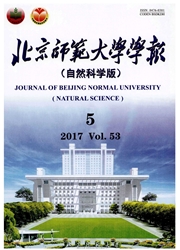

 中文摘要:
中文摘要:
在国际灾害数据库支持下,获取了中国1988--2007年发生的洪水灾害次数、人口死亡数和洪水灾害经济损失3项统计指标;利用P-Ⅲ型分布估算模型和信息扩散模型进行洪水灾害风险分析,并对二者方法进行结果对比分析.结果表明:在样本数据量较少的情况下,当风险水平在6或8时,P-Ⅲ型分布的重现期估计值变化迅速,这与实际灾害发生情况不符,不能很好地拟合洪水灾情情况;而信息扩散变幅不大,能够很好地拟合洪水灾情情况;说明信息扩散方法在小样本数据量情况下明显优于P-Ⅲ型分布估算模型,可以解决样本资料短缺的问题,是一种有效的处理小样本的方法.信息扩散理论对洪灾风险研究具有一定的理论参考价值.
 英文摘要:
英文摘要:
Three statistical indicators, number of flood disasters, number of deaths, economic losses, from 1988 to 2007, were taken from EM-DAT (OFDA / CRED) emergency disaster datasets and analyzed. Suitability of P-Ⅲ distribution estimation and information diffusion were compared for flood disaster risk analysis. Data showed that return period estimated by p-Ⅲ distribution decreased rapidly with small amount of data when the risk level is at 6 or 8, which is inconsistent with actual flood disaster frequencies. Information diffusion, however, has a better fit for flood disasters with small variation amplitude in the same situation. This indicated that information diffusion is an effective tool to analyze small samples in shortage of data, and has significantly better simulation results than p-Ⅲ distribution estimation approach. Moreover, it has high theoretical reference values for flood research.
 同期刊论文项目
同期刊论文项目
 同项目期刊论文
同项目期刊论文
 Monitoring stress levels on rice with heavy metal pollution from hyperspectral reflectance data usin
Monitoring stress levels on rice with heavy metal pollution from hyperspectral reflectance data usin 期刊信息
期刊信息
